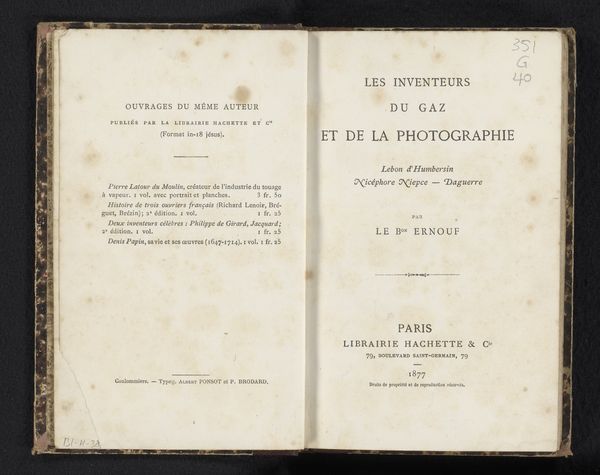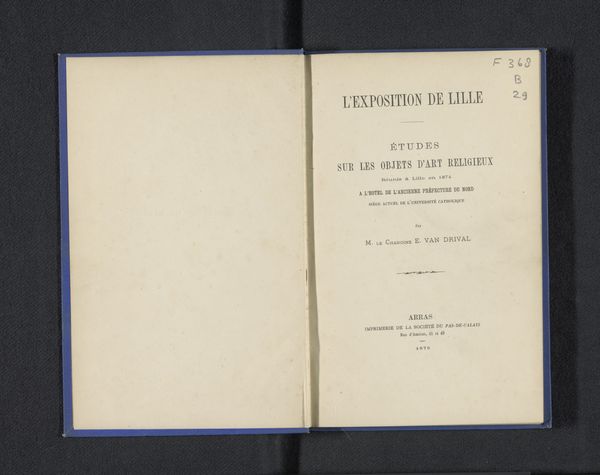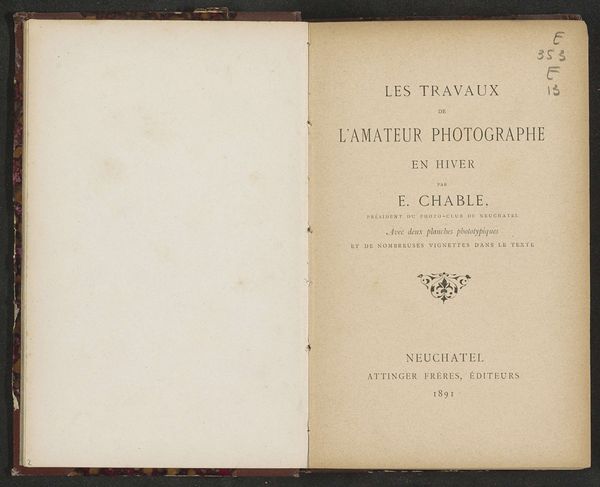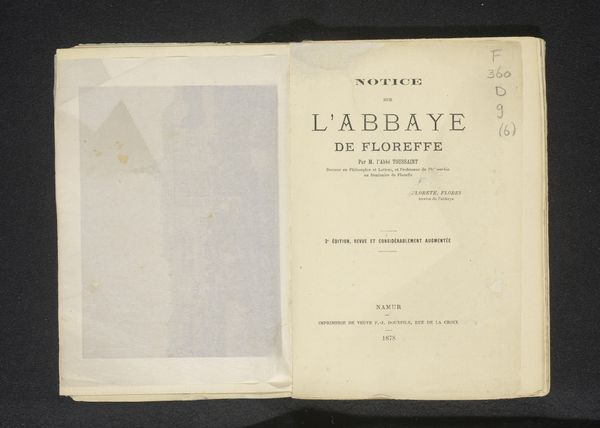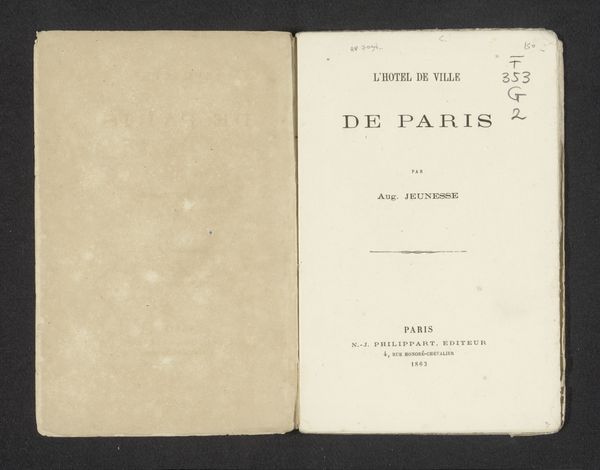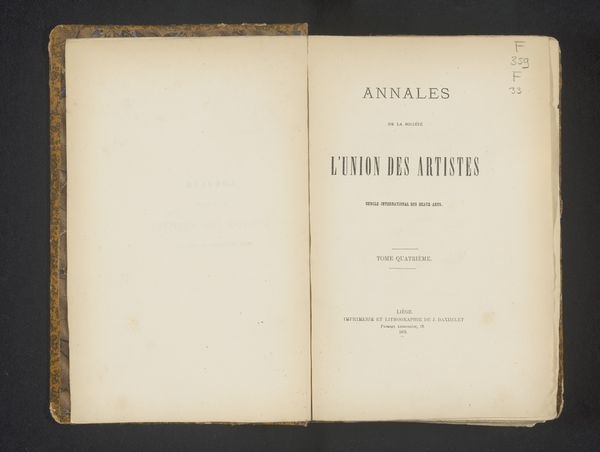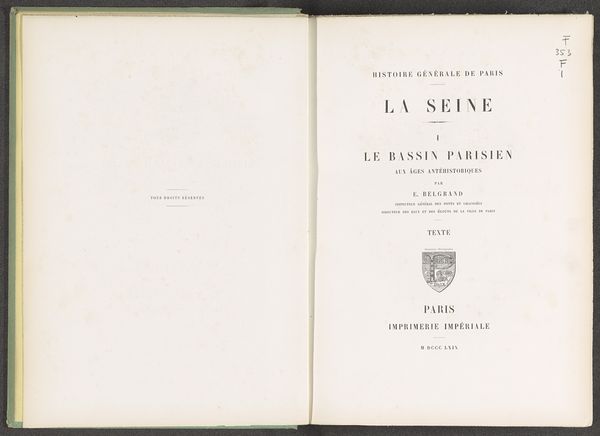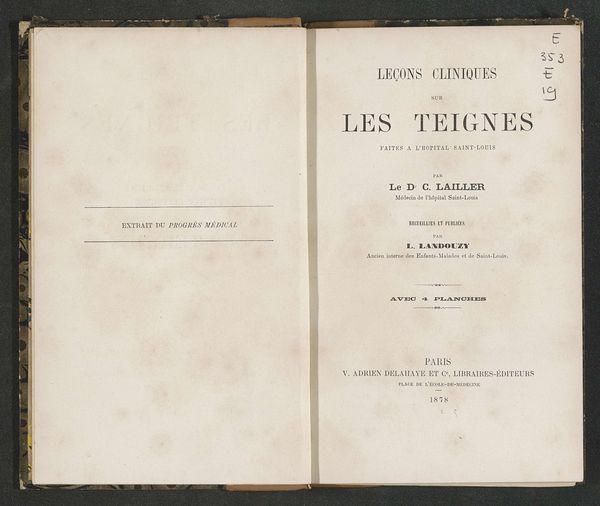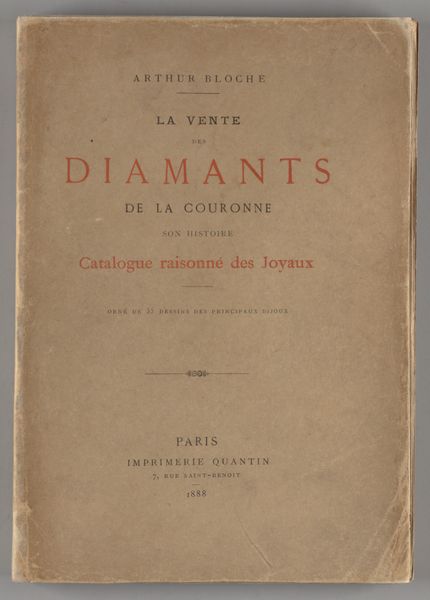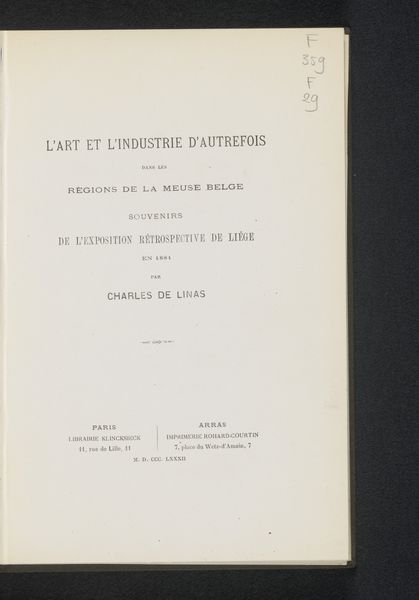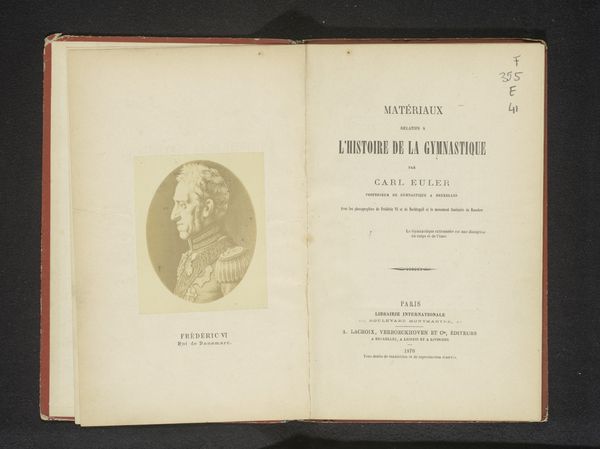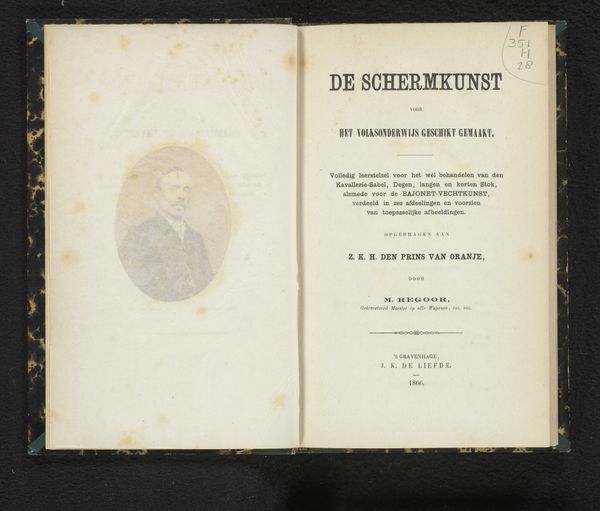
#
aged paper
#
paper non-digital material
#
paperlike
#
sketch book
#
personal journal design
#
personal sketchbook
#
journal
#
folded paper
#
letter paper
#
paper medium
Dimensions: height 222 mm, width 148 mm, thickness 2 mm
Copyright: Rijks Museum: Open Domain
This book cover for J. Carreau’s "Contribution au traitement de la lèpre" was printed in 1892 in Pointe-à-Pitre. Here, the printed word is the dominant symbol, an attempt to capture and contain knowledge about a disease that has long evoked fear and social stigma. Consider the word "leprosy." Throughout history, leprosy has not only been a medical condition, but also a metaphor for moral and spiritual corruption. The image of the leper, isolated and marked, resonates with ancient notions of purification and exclusion. We see echoes of this in medieval art, where lepers are often depicted as outcasts, their physical suffering mirroring a deeper spiritual malaise. Even today, the term "leprosy" can evoke powerful emotions, tapping into a collective memory of disease, ostracism, and the fragility of the human body. The very act of naming the disease, therefore, becomes a symbolic act, laden with historical and cultural baggage. It’s a non-linear progression of the symbol that resurfaces, evolves, and takes on new meanings in different historical contexts.
Comments
No comments
Be the first to comment and join the conversation on the ultimate creative platform.
